Showing Spotlights 121 - 128 of 624 in category All (newest first):
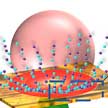 The origin of early life and the basic building blocks such as DNA and RNA have been hypothesized to have resulted due to accumulation of precursors within hydrothermal vents. The thermal gradients result in the concentration of prebiotic molecules with the vents acting as reactors. Researchers have translated this concept of accumulation-mediated concentration to the micro- and nanoscale for intensified materials synthesis and genomics. Utilizing a laser-induced micro bubble trap, their strategy, termed as unified spatiotemporal synthesis and structuring (US3), combines the conventionally discrete aspects of synthesis and patterning.
The origin of early life and the basic building blocks such as DNA and RNA have been hypothesized to have resulted due to accumulation of precursors within hydrothermal vents. The thermal gradients result in the concentration of prebiotic molecules with the vents acting as reactors. Researchers have translated this concept of accumulation-mediated concentration to the micro- and nanoscale for intensified materials synthesis and genomics. Utilizing a laser-induced micro bubble trap, their strategy, termed as unified spatiotemporal synthesis and structuring (US3), combines the conventionally discrete aspects of synthesis and patterning.
Nov 19th, 2019
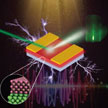 New work provides insight into the control over phase and ordering during halide perovskite epitaxial growth and expands the selection of photoactive materials for growing epitaxial halide perovskites that can be exploited in high-performance electronic applications. Hybrid organic-inorganic halide perovskite has attracted tremendous attention as an exceptional new class of semiconductors for solar harvesting, light emission, lasing and thin-film electronics. However, the toxicity of lead devices and lead manufacturing combined with the instability of organic components have been two key barriers to widespread application. Tin-based inorganic halide perovskites have been considered promising substitutes for their lead analogues.
New work provides insight into the control over phase and ordering during halide perovskite epitaxial growth and expands the selection of photoactive materials for growing epitaxial halide perovskites that can be exploited in high-performance electronic applications. Hybrid organic-inorganic halide perovskite has attracted tremendous attention as an exceptional new class of semiconductors for solar harvesting, light emission, lasing and thin-film electronics. However, the toxicity of lead devices and lead manufacturing combined with the instability of organic components have been two key barriers to widespread application. Tin-based inorganic halide perovskites have been considered promising substitutes for their lead analogues.
Nov 7th, 2019
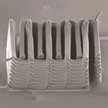 As an advanced fabrication technique, 3D printing has been increasingly utilized to fabricate complex 3D objects via digitally controlled deposition of phase change and reactive materials and solvent-based inks. When it comes to batteries, 3D printing has several significant advantages compared with conventional battery fabrication technologies and it opens new avenues for the rapid fabrication of 3D-structured batteries with complex architectures and high performance. In next generation futuristic 3D printed energy architectures batteries and supercapacitors could be printed in virtually any shape.
As an advanced fabrication technique, 3D printing has been increasingly utilized to fabricate complex 3D objects via digitally controlled deposition of phase change and reactive materials and solvent-based inks. When it comes to batteries, 3D printing has several significant advantages compared with conventional battery fabrication technologies and it opens new avenues for the rapid fabrication of 3D-structured batteries with complex architectures and high performance. In next generation futuristic 3D printed energy architectures batteries and supercapacitors could be printed in virtually any shape.
Nov 4th, 2019
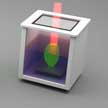 Hierarchical structures, spanning multiple length scales from nano- to macroscales, are very common in nature; but only in recent years have they been systematically studied in materials science, in order to understand the specific effects they can have on the mechanical properties of various systems. Researchers have developed a straightforward, cost-efficient, and fast route to fabricate hierarchical porous structures in a 3D printer. With this technique they can process nanoporous materials and fabricate structures from nanometer to centimeter scale.
Hierarchical structures, spanning multiple length scales from nano- to macroscales, are very common in nature; but only in recent years have they been systematically studied in materials science, in order to understand the specific effects they can have on the mechanical properties of various systems. Researchers have developed a straightforward, cost-efficient, and fast route to fabricate hierarchical porous structures in a 3D printer. With this technique they can process nanoporous materials and fabricate structures from nanometer to centimeter scale.
Oct 22nd, 2019
 As a coating, hydrogels bring many advantages to regular solid surfaces, uniting the superior properties of the substrate with the superior properties of the hydrogel. However, making hydrogel coatings outside a laboratory environment can be difficult. Inspired by the economics of paint manufacturing, we have developed a technique for hydrogel coating preparation that breaks the process up into several steps. This step-wise synthetic pattern, decoupling polymerization from crosslinking and interlinking, divides the labor between the hydrogel coating maker and its user.
As a coating, hydrogels bring many advantages to regular solid surfaces, uniting the superior properties of the substrate with the superior properties of the hydrogel. However, making hydrogel coatings outside a laboratory environment can be difficult. Inspired by the economics of paint manufacturing, we have developed a technique for hydrogel coating preparation that breaks the process up into several steps. This step-wise synthetic pattern, decoupling polymerization from crosslinking and interlinking, divides the labor between the hydrogel coating maker and its user.
Oct 8th, 2019
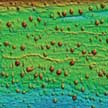 A novel and very promising design strategy for stretchable electronics is based on liquid metals; specifically the use of the oxide shell of liquid gallium alloys to fabricate polymerized liquid metal networks (Poly-LMNs). The novel attribute of these Poly-LMNs is that they increase in conductivity as they are elongated, resulting in the measured resistance across the conductor remaining nearly unchanged as they are stretched to 700% their original length. The implication of this effect is that a circuit can now be designed with a stretchable Poly-LMN wire that won?t change its resistance when stretched.
A novel and very promising design strategy for stretchable electronics is based on liquid metals; specifically the use of the oxide shell of liquid gallium alloys to fabricate polymerized liquid metal networks (Poly-LMNs). The novel attribute of these Poly-LMNs is that they increase in conductivity as they are elongated, resulting in the measured resistance across the conductor remaining nearly unchanged as they are stretched to 700% their original length. The implication of this effect is that a circuit can now be designed with a stretchable Poly-LMN wire that won?t change its resistance when stretched.
Oct 3rd, 2019
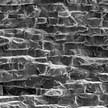 To make epoxy-graphene nanocomposites, the graphene nanosheets are commonly mixed homogeneously with the epoxy matrix. However, one of the problems that bedevils these nanocomposites is the issue of agglomeration of the nanofillers. Researchers now report that they have sucessfully tackled this dispersion problem by constructing a continuous graphene-based scaffold. The results show that the team's novel strategy boosts the fracture toughness to about 3.6 times that of pure epoxy.
To make epoxy-graphene nanocomposites, the graphene nanosheets are commonly mixed homogeneously with the epoxy matrix. However, one of the problems that bedevils these nanocomposites is the issue of agglomeration of the nanofillers. Researchers now report that they have sucessfully tackled this dispersion problem by constructing a continuous graphene-based scaffold. The results show that the team's novel strategy boosts the fracture toughness to about 3.6 times that of pure epoxy.
Sep 25th, 2019
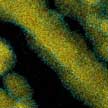 Manganese oxides have numerous applications in batteries, supercapacitors, microelectronics and (electro)catalysis. Researchers describe a cheap and fast method for depositing conformal thin films of manganese oxide on nanostructured substrates with close-to-a-monolayer precision, competing with the state-of-the-art atomic layer deposition (ALD). The team's redox layer deposition (RLD) is performed in air, at room temperature, using common and cheap chemicals and simple glassware - literally two beakers.
Manganese oxides have numerous applications in batteries, supercapacitors, microelectronics and (electro)catalysis. Researchers describe a cheap and fast method for depositing conformal thin films of manganese oxide on nanostructured substrates with close-to-a-monolayer precision, competing with the state-of-the-art atomic layer deposition (ALD). The team's redox layer deposition (RLD) is performed in air, at room temperature, using common and cheap chemicals and simple glassware - literally two beakers.
Aug 13th, 2019
 The origin of early life and the basic building blocks such as DNA and RNA have been hypothesized to have resulted due to accumulation of precursors within hydrothermal vents. The thermal gradients result in the concentration of prebiotic molecules with the vents acting as reactors. Researchers have translated this concept of accumulation-mediated concentration to the micro- and nanoscale for intensified materials synthesis and genomics. Utilizing a laser-induced micro bubble trap, their strategy, termed as unified spatiotemporal synthesis and structuring (US3), combines the conventionally discrete aspects of synthesis and patterning.
The origin of early life and the basic building blocks such as DNA and RNA have been hypothesized to have resulted due to accumulation of precursors within hydrothermal vents. The thermal gradients result in the concentration of prebiotic molecules with the vents acting as reactors. Researchers have translated this concept of accumulation-mediated concentration to the micro- and nanoscale for intensified materials synthesis and genomics. Utilizing a laser-induced micro bubble trap, their strategy, termed as unified spatiotemporal synthesis and structuring (US3), combines the conventionally discrete aspects of synthesis and patterning.
 Subscribe to our Nanotechnology Spotlight feed
Subscribe to our Nanotechnology Spotlight feed





